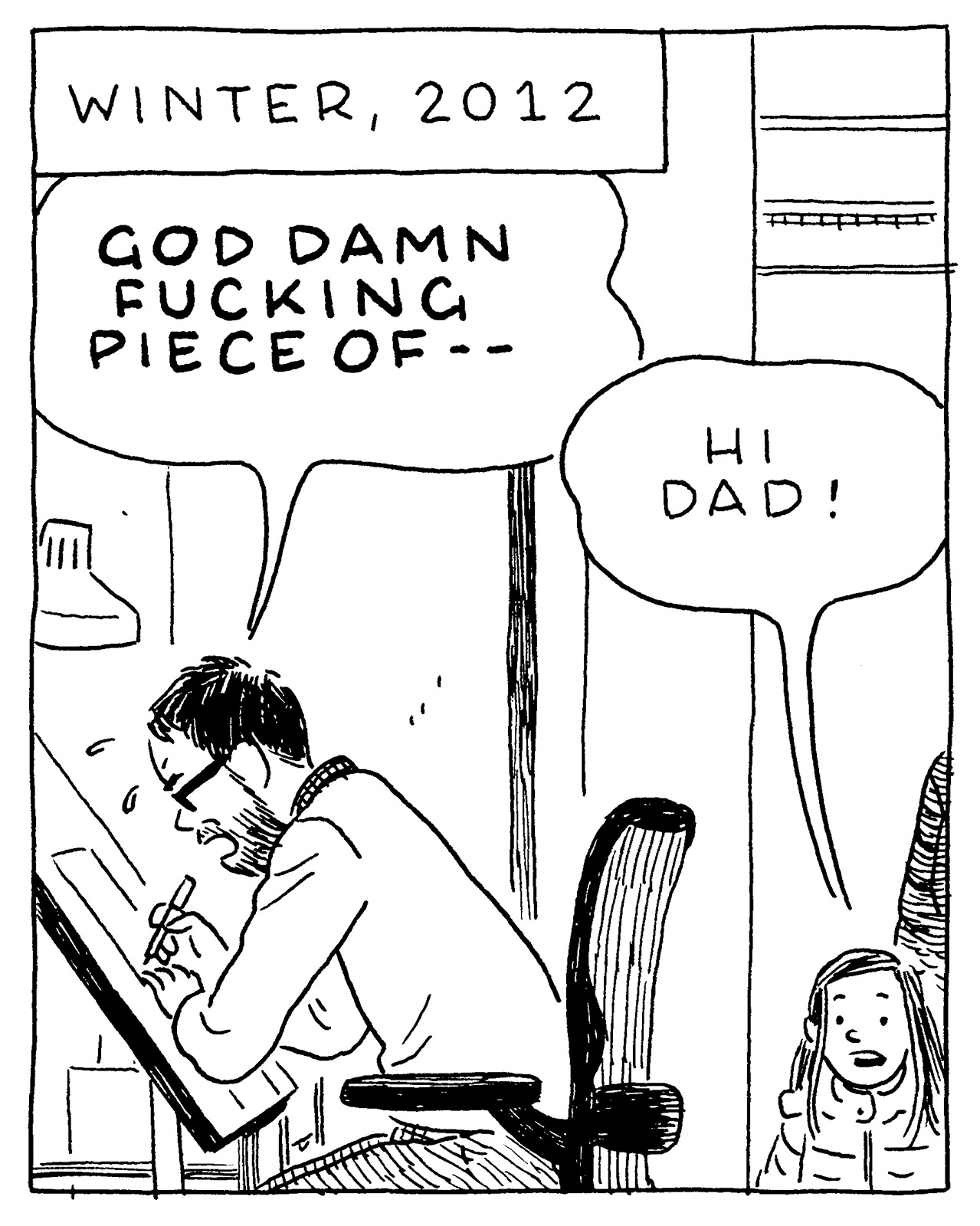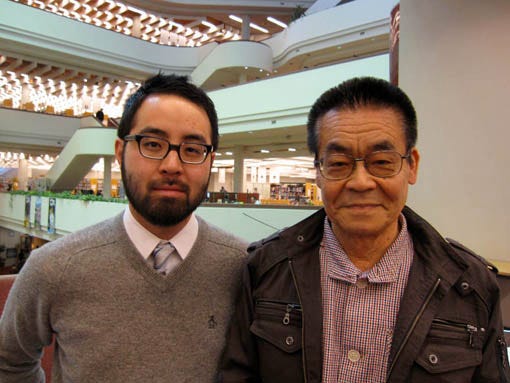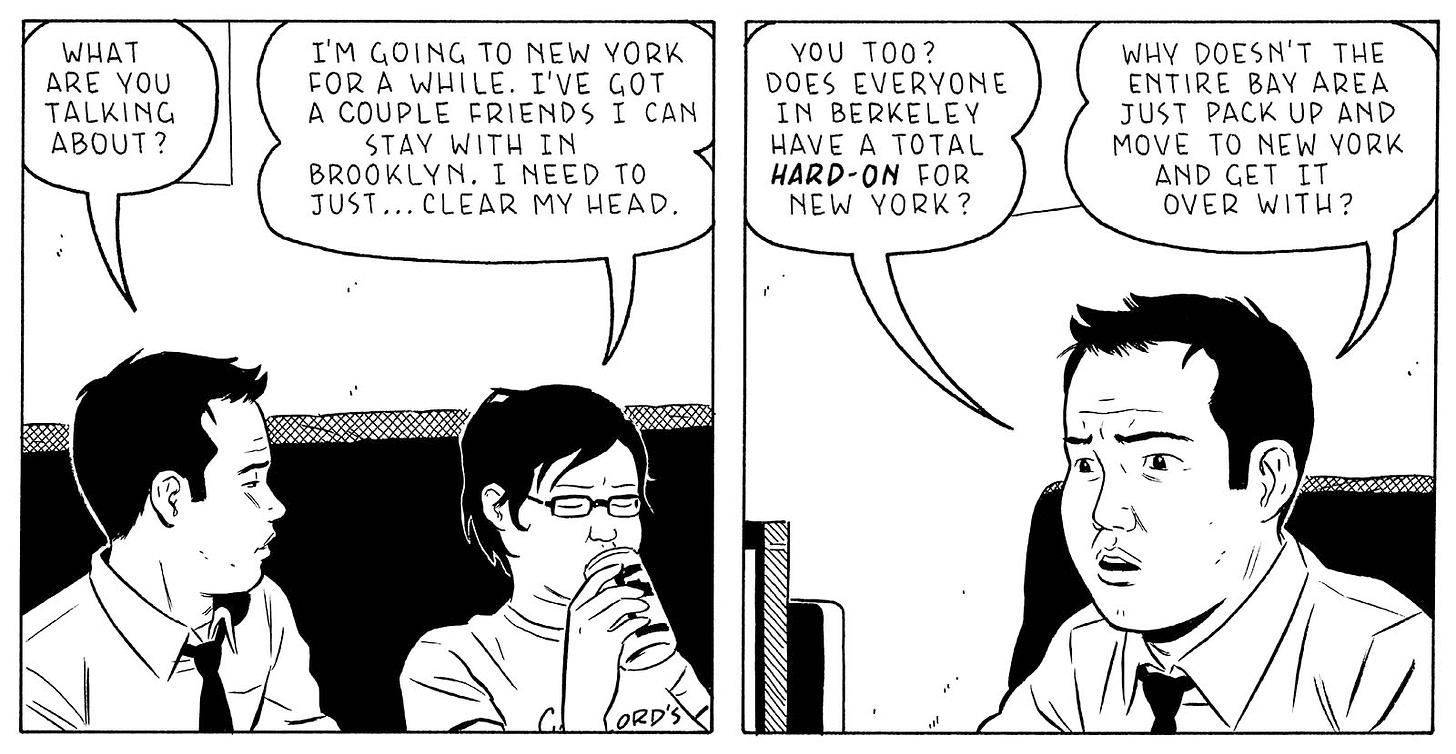First Cartoonist / Parenthood / Table / Scanner / Books I Sent / Student Film / Finding the Story / Superhero Publishers / Sarah Silverman / Original Drawings / Sketches / Emotion / Tatsumi / etc.
Hello, everyone!
Well, somehow a month has already flown by, and this will be my final post as the Substack Writer in Residence.
I’m honored to announce that the next resident writer will be none other than Jeanette Winterson, who will be posting new ghost stories throughout the month of November. You can read and subscribe here. Best wishes to Ms. Winterson, and to all the writers in residence to follow. I look forward to reading your posts.
For my final post, I wanted to respond to as many remaining questions as possible, so let’s get started!
Q: Who was the first cartoonist you ever met?
Morrie Turner, creator of the comic strip Wee Pals. I took a summer school class from him when I was a kid, and he was incredibly generous and encouraging. I really loved talking to him.
Q: Please talk about how being a parent affects your art and process!
I’ve talked a lot about this in the past, and I still stand by all the positive things I’ve said about how becoming a parent changed me and affected my work, but I also wish I’d been a little more nuanced. I see so many interviews with artists and writers and especially celebrities who talk glowingly about parenthood, but I never feel like they’re being 100% honest. I don’t like the idea of some new parent struggling to create artwork and thinking, “Why the fuck is it so easy and wonderful and inspiring for everyone else?” So as an addendum to everything I’ve said before, I’ll also say, simply, that having kids has made it harder for me to be an artist. There are many ways in which the two endeavors influence and enrich each other, but there’s also no getting around the fact that there are a lot of demands in terms of time, energy, emotion, and finances that just didn’t exist before my kids came along. Of course, I vastly prefer my life now, but I’m also not a very serious artist.
Q: What did your kids think about their appearances in The Loneliness of the Long-Distance Cartoonist?
My older daughter read the book as I completed each page, and her interest definitely increased once she appeared as a character. But aside from a little bit of nit-picky fact-checking, she didn’t say much about it until after the book was published. We were walking somewhere and, out of the blue, she said, “I read your book again last night.” I asked what she thought of it, and she replied, “It was kind of funny and sad.” I asked what was sad about it, and after a long pause, she said, “I always thought you liked The Greatest Showman.” (There’s one line in the book that vaguely implies the contrary.) And my other daughter is too young to read it, but she’s looked at it. Apparently one day at school she told her teacher and classmates, “My mom is a doctor who helps people with their feelings, and my dad draws pictures of himself.”
Q: I saw a photo of your studio online. What make and model is your drafting table?
It’s just an Alvin drafting table that I bought at Blick when I first moved to New York. I don’t think there’s anything particularly special about it, but it was cheap and it’s held up well. I prefer the look of a wooden table, but the weird, specific reason I like these tables with white melamine surfaces is that I can draw perspective vanishing points way beyond the edge of my paper and then just erase those pencil marks with ease.
Oh no...I just tried to find a link for the drafting table and discovered that the company has gone out of business! Suddenly, the thought of not being able to replace it makes the table seem a lot more precious.
Q: How do you scan such a large piece of work? Do you have a large format scanner at home? (If so, which?) or you take it to a place to have it scanned? This has been a problem for me, its hard to find an accessible scanner-printer with a scan area larger than A4, specialized large format scanners are extremely expensive and print shops usually give a terrible result on their regular Xerox copy machines.
I have a very old Microtek 9800XL large-format scanner that I’ve had since probably 2004. I wouldn’t necessarily recommend this, but if you’re trying to save money, you can download software that will allow you to use old, outdated scanners like this with modern computers.
Q: Did you get the books I sent ya?
Yes! Sorry I haven’t responded directly, but they look great.
Q: Can I adapt one of your stories into a short film? It would only be a student project, and not released commercially.
All film / tv rights inquiries should be directed to Charles Ferraro and Keya Khayatian at UTA. Their contact info is on my website. But in general, I’d recommend generating your own material for a student project. It’s not like any of my stories are particularly “high concept,” and you could probably come up with similar ideas on your own. And then you’d be an “auteur.”
Q: How do you go about the process of finding the story you want to tell?
I try to gravitate towards stories that I think no one else would tell, at least not in the same way. Drawing from my own life experiences and allowing my own thoughts and personality to imbue the work helps make a story more specifically my own. Unfortunately, I now have to also take into account my past work and try my best to avoid repeating myself, but that’s a fair trade-off for a long career.
Q: If one of the major superhero publishers came knocking and said, “Pick a character or characters and do whatever the hell you want,” what would be your answer?
“Would it be work for hire?”
Q: In “Killing and Dying” the protagonist re-tells a Sarah Silverman joke (among others). Could you point me to the source it’s from? And while on the subject, what was the starting point of this story? This story feels very realistic.
For some reason, I can’t find the clip of that joke right now. I know it was from some televised stand-up performance, and that I saw it on YouTube at some point.
If there’s any Sarah Silverman superfans out there, maybe you could point us towards the joke that ends with the line about “my dad having a thirteen-year-old best friend.”
The starting point for this story was an experience I had almost twenty years ago, when Dan Clowes and I stumbled upon an open mic comedy show at a cafe in Berkeley. It was, well...let’s say “unforgettable,” and some of the material in the story came directly from that night.
Q: Do you sell original drawings?
Yes, I sell some on my website and some through Adam Baumgold Gallery. I also have signed prints available through my website and at PowerHouse Books in Brooklyn.
Q: Do you ever do sketches for fans?
I’m terrible at off-the-cuff drawing, especially while people are watching, but I’m happy to do a little unimpressive sketch for anyone at a book signing event. (I once drew a sketch for a guy in Holland and when I was done, he silently walked away. A few seconds later, he came back and handed the book to me and asked, “Can you make it better?)
Q: Now that you’re venturing into films and noticing that you’re a film fan, I have a question. In film, emotions can be conveyed via camera movements, music, sound design, etc. Unfortunately that’s not the case in comics, which is more static. How to convey character’s emotions more easily and interestingly in comics by overcoming the limitations of the medium which are not there in film?
I think film and comics both have their limitations, and neither is inherently better for conveying characters’ emotions. For a long time, I tried to resist a lot of the aspects of cartooning that I felt were too comic book-y, like sound effects, thought balloons, motion lines, etc., but they can be really useful tools, offering opportunities that film can’t. And for the record, I think a static image can be incredibly powerful in terms of conveying emotion.
Q: Will more Tatsumi work ever see the light of day?
This question refers to the legendary Japanese cartoonist Yoshihiro Tatsumi, and the translations of his work that I edited for Drawn & Quarterly. And the answer to the question is: I don’t know. I haven’t had any direct contact with anyone about this since Mr. Tatsumi passed away in 2015.
I’ve heard that he had completed a fair amount of work on a sequel to his memoir A Drifting Life, but I don’t know much more beyond that. There are hundreds—if not thousands—of pages of his work that have not been translated into English. Just speaking as a fan, I’d love to read more of Mr. Tatsumi’s work, but the issues of rights and permissions (as well as the wishes of his estate) are obviously not my domain.
Q: What surprised you the most about the responses you received from readers about Shortcomings?
I was very surprised and flattered that, for the first time, I had created characters that people referred to by name and felt strongly about. I was also surprised by the curiosity people had about how autobiographical the story was, but I probably shouldn’t have been.
Q: I was wondering about the process or ways of reaching out to your favorite cartoonists or writers. Did you send them a mail with your work in it or sent them letters about what you loved about their work (i.e. fan mail)? What's appropriate and is it too forward to even send your work out for critique to your writers you admire?
I don’t think there’s anything inappropriate about sending your work to artists you admire. But it is inappropriate to expect a certain kind of response, or even any response at all. Also, if you specifically ask for feedback, be prepared to take some criticism.
Q: I hope you were able to get my letter in the mail back in 2017 when I asked for a podcast interview. LOL.
Apologies if you really did send that letter and I didn’t respond. And I’m sure it’s moot now, but for anyone reading this, please direct these kinds of inquiries to Drawn & Quarterly’s director of marketing, Julia Pohl-Miranda. Her email address is: julia@drawnandquarterly.com, and she’s much more organized and responsible about this stuff than I am.
Q: Do you have any how-to books for writing / cartooning / etc. that you’ve found especially helpful or significant?
I think the best how-to books about cartooning are just the books that contain the best cartooning. I learned the most about making comics from studying, copying, and then learning how to not copy from the work of my favorite cartoonists. But for whatever reason, the two instructional books from my childhood that remain clearest in my memory are How to Draw Comics the Marvel Way by Stan Lee and John Buscema and Drawing the Head & Figure by Jack Hamm.
Q: How does the writer residency work?
Substack reached out to me and offered to walk me through the process of setting up a newsletter. They asked that I write at least four posts over the course of the month, and to be totally honest, they paid me well to do so. It’s been really nice to try a new kind of work, and I’ve loved getting to know all the people who assisted me along the way, especially Hanne Winarsky and the fine folks at Rescue Vessel.
Q: How do you say your last name?
Ha ha, very funny.
Okay, that’s it for now! Thanks again to Substack for this opportunity, and thanks especially to everyone for reading. Just because my residency is ending, that doesn’t mean that this account will shut down. I won’t be able to keep up the pace of this past month, but it’s possible that I will post again at some point if I find myself with something worth writing about. In the meantime, please visit my website and follow on Instagram. And please continue to support independent publishers, comic shops, and bookstores!








This is comedy gold:
"Apparently one day at school she told her teacher and classmates, 'My mom is a doctor who helps people with their feelings, and my dad draws pictures of himself.'"
But isn't this true for all artists/writers/authors/creators? The work, in the end, is a reflection of the creator, it is a picture of themselves. I hope my picture is at least a little bit accurate: https://moviewise.substack.com/p/movie-reviews
Are you able (without fear of being picked off by the Substack snipers) to share your frank views about comic creators leaping onto this platform as the main means of distributing (initially digital) installments of their new graphic novels (together with bonus and BTS content) in return for a subscription fee (and of course the Substack grants)?
I'm primarily interested in your take from the professional published creator's POV, and secondarily I'd be keen to hear if you think this might be a way for new unpublished creators to get their work out there and be noticed, in the present saturated marketplace for free digital comics?